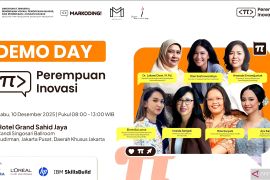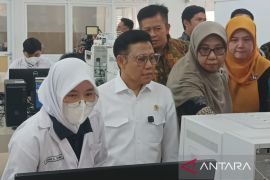The demographic bonus is shown by the number of productive age population reaching double the number of children and elderly people. In other words, the population of productive ages (15-64 years) is bigger than that of unproductive people (ages 0-14 years and 65 and over).
President Joko Widodo (Jokowi), on several occasions, mentioned that Indonesia must be able to take advantage of the opportunities to realize a Golden Indonesia in 2045.
The two opportunities are the peak of demographic bonus in 2030 and high international trust in Indonesia, he said.
The demographic dividend can be interpreted as an economic benefit that can spur investment and economic growth. For Indonesia, this condition can be used as an opportunity to accelerate the economy, by improving the manufacturing industry, infrastructure, and small and medium enterprises (SMEs) due to the high supplies of workforce.
Several countries, such as Japan and South Korea, have turned into developed and rich ones due to their successes in absorbing their demographic dividend to boost the capita per income and resulting in social welfare.
In his study on the relationship between population and economic growth, SM Adioetomo suggested that the demographic bonus could also become a demographic disaster due to an increase in the elderly population while the transition from teenagers to productive ages was not yet complete.
Moreover, the demographic bonus does not have a significant impact if the country does not optimally invest in human resources.
The demographic bonus can also be a disaster if there is a wave of mass unemployment which further increases the burden on the state budget.
At the National Collaboration Towards a Competent Indonesia in 2030, held on October 14, the Director General of Education at the Education, Culture, Research, and Technology Ministry Kiki Yuliati informed that Indonesia was ranked second in terms of unemployment in Southeast Asia, reaching 5.45 percent in February 2023.
One of the causes was the weak quality of the Indonesian workforce when compared to the increasingly complex current and future job needs. Moreover, the average school duration of residents aged 15 years and over was only 9.08 years.
According to Yuliati, vocational education is an alternative to producing competitive and competent human resources. One of the efforts made by the government is to encourage collaboration between vocational education and the world of work through the Independent Learning Program. Through this way, the industrial sector is expected to enter campuses.
The vocational education units, together with the world of work, industry, and business entities, can jointly carry out internships or work practices, competency certification, joint curriculum preparation, applied research collaboration, industry practitioners' classes, industrial classes, and project-based learning from industry.
They can also encourage the involvements of teachers and lecturers of vocational trainings at the industrial internship.
The key to making the program successful is by improving competence and relevance, sharing resources between industry and educational units, downstreaming and utilizing expertise and research or innovation results, using higher education as research and development for industry or the world of work, as well as promoting a super tax deduction for business entities, recruitment efficiency and human resource preparation.
The link and match between the educational unit and the industrial sector, however, still faces several challenges.
One of the challenges is related to the lack of relevance. It has been addressed by inviting industries to participate in building the school’s curriculum, involvement of practitioners to teach, and conducting internships. These efforts aim to ensure competency suitability between the two entities.
Another challenge is related to the number of graduates in the country, which is larger than employment opportunities.
Moreover, there is also a mismatch in terms of location, where, for example, the number of vocational schools in one area is greater than the number of employment opportunities while in other areas there is a shortage of workforce.
However, mobilizing human resources from one area to another is not easy, especially at the vocational school level.
Therefore, a collaboration between stakeholders, starting from ministries, the private sector, communities, and the media is urgently needed.
“Thus, we are considering the ideas initiated by the National Movement for Competent Indonesia (GNIK) starting from the regulatory sector, programs development, and budget policies,” Yuliati said.
Collaboration
Preparing competent human resources cannot be carried out by one party. Instead, it requires an active involvement of other related stakeholders. Therefore, GNIK acts as a platform to gather competent practitioners in Indonesia.
Chairman of the Central GNIK Steering Committee Yunus Triyonggo conveyed that his party has created a road map containing strategic planning to achieve a Competent Indonesia, including increasing workforce competency which is aligned with the current digital technology.
As an association of human resources practitioners throughout Indonesia, his party is working to improve human resources competency in Indonesia, especially in priority industrial sectors such as manufacturing, tourism, automotive, as well as digital and creative industries.
In the future, Indonesia’s human resources are expected to compete with workforces from China, India, Japan, and South Korea.
Moreover, Indonesia actually has qualified human resources with a lot of potential and achievements. Therefore, collaboration must be pursued by the government and the private sectors to regulate and execute intervention programs in creating and supporting more qualified human resources.
Through the event, held on October 14, representatives from GNIK, state-run health insurer (BPJS Health), and the State Administration Institute of the Republic of Indonesia (LAN RI) could hopefully accommodate and gather all sectors to improve Indonesian workforce and enable them to compete with foreign workforces.
Related news: Need stakeholder collaboration to create competent workers: GNIK
Related news: Demographic bonus opens health investment opportunities
Editor: Rahmad Nasution
Copyright © ANTARA 2023












